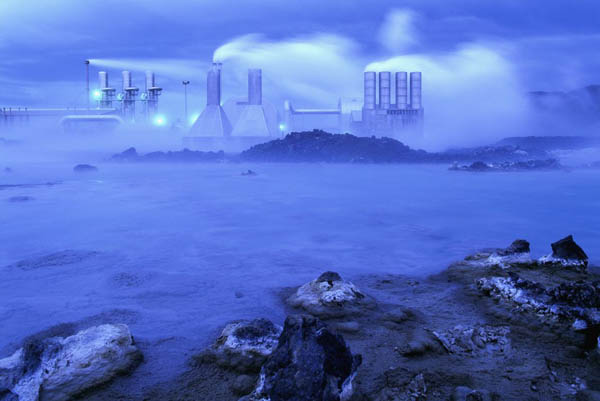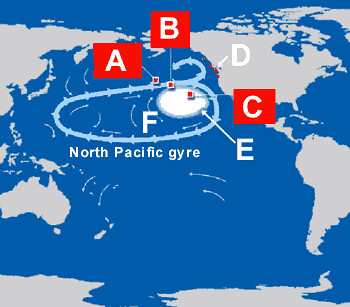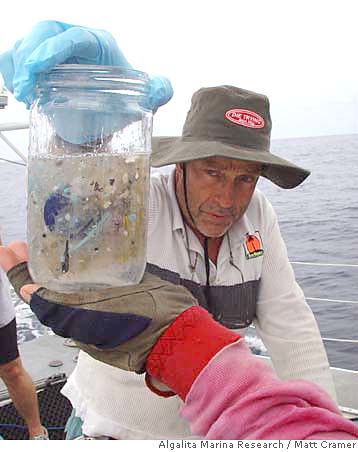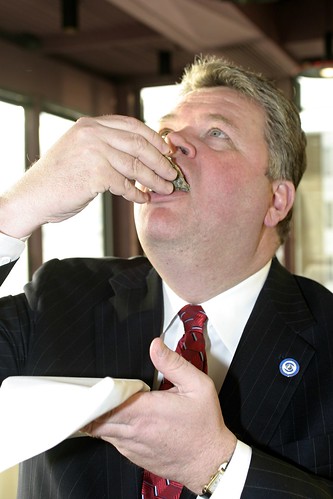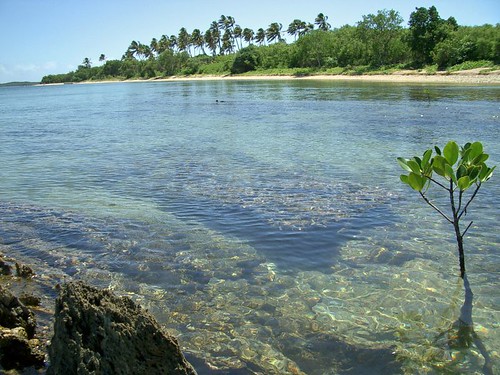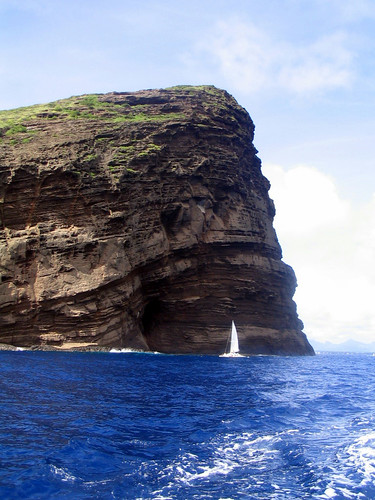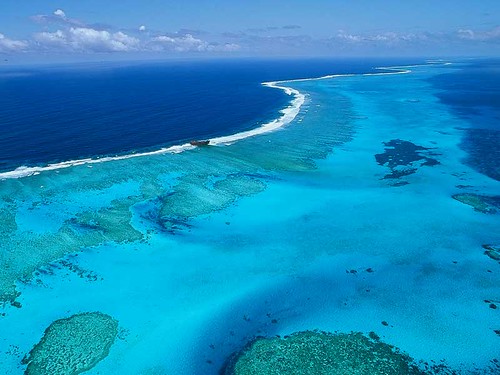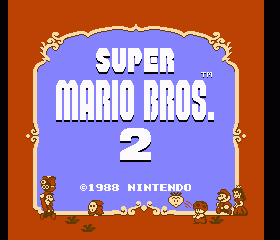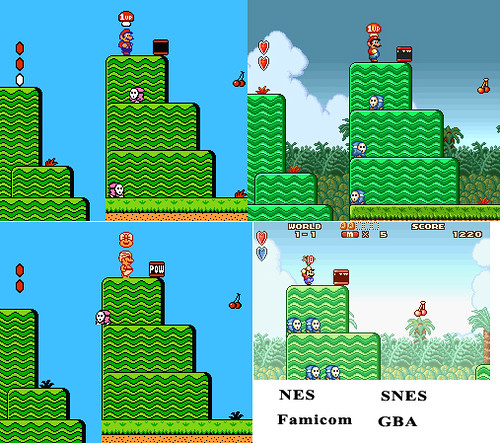
Isolated above the artic circle there lies an island that teeters on the edge of uninhabitable. Mainly glaciers and volcanic sands, Iceland offers little farm land and indigenous crops. The 300,000 inhabitants1 of this island are the direct descendents of rouge Vikings who fled corrupt government rule to create a new society and standards in which to govern themselves. These Vikings established what was to be the first recognized parliament in 9602 called the Althing. Icelandic history is littered with peaceful and organized shifts towards the best plausible outcome for its inhabitants; the Icelandic labour situation is no different.

The Icelandic labour market on average flips between two to one percent unemployment, with a union coverage rate of eighty –eight percent3. If one is not part of a given union, but still works in a field with union coverage, then that individual can still benefit from indirect union coverage as ninety-five percent of Icelandic labour fields are protected by labour unions4. Labour unions in Iceland are well organized power full groups who usually encompass more then one industry and bring unity and nationalism to working in Iceland. The largest group, ASI, encompasses half the nations working force and works directly with the Icelandic government to prompt the longevity of the Icelandic economic market5. There have been many bumps on the road to get where Iceland is now, and in this essay one can see how the labour market has had to deal with the failing fish markets in the early 90s that collapsed the Faroese markets, and the inequality that exists between women and men in the Icelandic labour markets. Also a focus will be to examine how the Icelandic government promotes strong unions and labour participation to better Iceland’s world position through laws and regulation to help shake the obscurity that comes with being an isolated island. Iceland has taken many steps to aide in its survival in a harsh climate and world, with the creation of one of the first thermal energy plants in the late eighties. Ninety-nine percent of Icelandic power comes from hydroelectricity from geothermal heat. Iceland also was the first country to offer fuel cell gas stations to help aid in the fight against global warming6. The Icelandic government has a pattern of forward thinking that one can see as common theme through out its labour markets history, which has allowed Iceland to get to this point.

The Icelandic labour market is comprised of one the highest participations rates anywhere in the world, as while as having the fourth highest GDP and highest GNP per capita of any country7. The Industrial Relations Act dates from 1938 have remained largely unchanged until 1996 when some amendments were made. The 1938 Act ensures wage-earners the right to form unions, open to everyone belonging to the trade in question within a particular district8. The Act stipulates that unions be organized by trade rather than by firms or industries. In consequence, within large firms, the workforce may belong to twenty or more unions. After WWII Iceland was left in a relatively good position comparative to Europe and used this to gain its independence from the still ravished Denmark. Seeing a quick opening in European market Iceland made strides to capitalize in its advantage and ratified ILO Convention No. 87 (1948), the Freedom of Association and Protection of the Right to Organize Convention in 1950 and ILO Convention No. 98 (1949), the Right to Organize and Collective Bargaining Convention, in 19529. The main priority of Iceland was to have as little unemployment as possible as they felt the best possible labour market was to give more rights to the already existing labour unions to make work more appealing10. Disputes over industrial relations, such as strikes and interpretation of pay agreements, are referred to the Labor Court, a group of appointed judges, who also are members of the civil labour union themselves11.
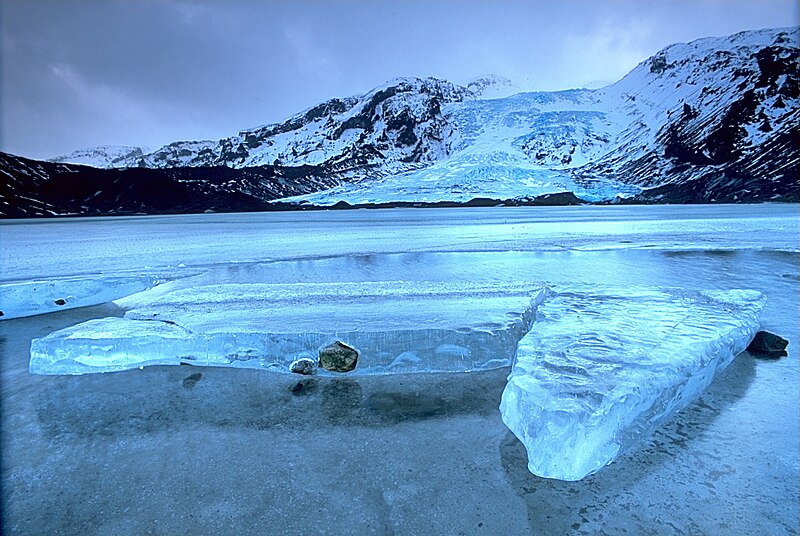
The Icelandic Federation of Labor (ASÍ), founded in 1916, and is the largest trade union in Iceland. Most of the unions that comprise the ASÍ are organized into six national federations. In all, there are a hundred and eleven unions affiliated to ASÍ federations and fourteen unions belonging directly to it12. Roughly there are hundred and twenty-five unions with membership with 69,500 branches at the end of 1999. Control lies with the individual unions and their members13. The ASÍ does not negotiate wage agreements, but rather puts recommendations to individual unions for approval or rejection. Negotiating policy is usually determined by a committee of chairmen of the federations (and of unions with direct membership). When this body opts for a centralized bargaining round, a negotiating committee is chosen which must seek a mandate from each individual union14. As well, it must seek authority for calling for strikes. Once a wage contract has been negotiated, it must be put to the vote at a general meeting in each individual union. Public employees are organized into numerous unions which in turn belong to three different federations. The Federation of State and Municipal Employees (BSRB) is composed of thirty-five unions in state or municipal employment, with a total membership of 16,810 (as of the end of 1999)15. Employers are required by law to deduct from the wages of their respective workers for their contributions payable to the trade unions, these rules as specified in the applicable collective agreements. This obligation is based on Act No. 55/1980 and collective agreements16. Union fees are determined by trade unions and are roughly one percent of the worker’s wages17. Collective bargaining in Iceland is governed by Act No. 80/1938 which gives the right to trade unions to negotiate agreements with employers concerning the wages and other terms of employment18. Collective agreements are generally automatically binding on all workers and employers who work within its occupational and geographical area. Agreements are negotiated by individual trade unions where local conditions are taken into account19. Also offered is the enterprising agreement, which Incorporates into all collective agreements a chapter called “Company-related parts of collective agreements”, known as an agreement within the general agreement achieved between a given firm and its workers20. The idea behind the enterprising -related agreement is to better the cooperation of employees and executives in the workplace, specifically making adjustments to improve the wages to increase productivity. This type of agreement can cover many issues, shift-work, including flexible daytime work, a four-day work week, postponement of weekly day off rest etc. An enterprise agreement does not constitute a collective agreement, as the employers' associations and trade unions are not parties to the agreement21. They can, be called upon to participate in discussions as advisors. Union representatives at the work-place act as spokesmen for workers in the course of discussions with the firm's executives.Employers are prohibited from discriminating between applicants for work on the basis of gender. The same applies for promotion, changing of position, continuing education, vocational training, study sabbaticals, dismissal, employee’s working conditions and the working environment50. It is also illegal for an employer to discriminate in advertisement that they may prefer the preference of one specific gender or race. However if the aim of the advertiser is to promote a more equal distribution of the sexes within an occupational sector, a vacancy may be allowed to be posted if such is the case.

The legal age to start work is fourteen, as well as become a member of a given union. Retirement age for a worker is not mentioned anywhere in Icelandic law; however collective agreements in the private sector labour market can be prearranged51. Old age pension for most workers is set at the age of sixty-seven. Workers can opt for early retirement at sixty-five or postpone their retirement to the age of seventy. Seamen are however entitled to old age pension at the age of 60, if they chose to retire completely52. One can be self employed and collect a pension still, however there is a social stigma attached to this. Unionized industries are entitled to collective rights, where employers and workers in unions can come to certain agreements for employers in there industry. Act No. 55/1980 states, that wages and other working terms agreed between the social partners in collective agreements are minimum terms, independent of sex, nationality etc. for all workers in there respective field within the area covered by the agreement53. Minimum wage, therefore, is negotiated per-field and usually only applies to those under eighteen and working part time. Fulltime unionized workers rarely ever receive minimum wage unless in the service industry. Collective agreements negotiated by trade unions affiliated to SGS define full-time work as 173.33 working hours per month (forty hours per week)54. For office workers the working hours per month is measured as 162.5 hours. Work exceeding these limits is paid as percentage of the daytime rate and paid as overtime. Wages for overtime are defined as an hourly pay equalling 1.0385% of the monthly wages for day works.

Iceland is a full member of the European Free Trade Association entering into a free trade agreement with the European Community in 197322. The agreement allowed cross free cross-border movement of labor, capital, goods, and services between Iceland, Norway, and the EU countries. Even with globalizing friendly agreements like this the government of Iceland remains opposed to EU membership, primarily because of Icelanders' concern about losing control over their fishing resources. Iceland also has bilateral free trade agreements with several countries outside the EEA23. The most extensive of these is the Hoyvík Agreement between Iceland and the Faroe Islands, this agreement goes deeper than the EEA agreement by establishing free trade in agricultural products between the nations. Iceland also has a free trade agreement with Mexico. Roughly eighty percent of exported agricultural goods in Iceland are some form aquatic life24.

A problem presented in the Icelandic labour market is the unfair treatment of women in the work place. Icelandic culture is deeply rooted in the dominance of males and few female heroes have risen out the sub arctic dessert. Originally Iceland started off as a land where women could claim land, and be subject to the same amount of rights as men. Today Iceland is seen to be behind Europe in its treatment of women in the workplace. Europe in general has never really had a great track record for treatment of women in the labour market, generally paying women twenty-five percent less of what men are paid. Iceland in 1975 women where paid thirty-five percent less for doing the same job as a man56. In 1975 Icelandic women held only five percent of the seats in parliament and conditions for being a woman in the Icelandic women labour market where very undesirable, as men where getting the better jobs. In October 1975, 25,000 Icelandic women attracted worldwide attention when they left their homes and workplaces to go on strike57. They gathered for two hours in the centre of Reykjavik in what was the country's largest political rally ever. There efforts proved to be effective, as by 2005, the pay gap had decreased by ten percent and more women where seeking post secondary education58. According to the trade unions in 2005, women on average earned fourteen percent less than men, an improvement from the 1975wage gap59. Additionally, in June 2005 the Icelandic Business College reported that its female graduates went on to earn up to fifty percent less than their male classmates59. Some women's rights activists express concern that only fourteen percent of the Supreme Court bar and twenty-four out of a hundred and forty-eight professors at the national university are women. In January 2005 the Supreme Court ruled against the municipality of Akureyri in a gender wage discrimination case where a female department head was paid considerably less than a male counterpart60. The court ordered the town to pay restitution as well as adjust the woman's salary. On October 25th 2005, fifty thousand women walked of the job. The protesters included actresses, politicians, fish factory workers, teachers and diplomatic staff. Embassies grounded to a halt, as did the banks, government departments, most shops and kindergartens60. The group gathered and marched through Reykjavik and other Icelandic towns, banging pots and pans shouting, "Women, let's be loud!" and "Equality now!”60. The rally was stunning as the population of Iceland is only three hundred thousand. Currently women hold thirty three per cent of the seats in parliament, and eighty per cent of female population are a part of the work force, up from fifty per cent in 1974. Iceland has had a woman president, Vigdis Finnbogadottir, reigning between 1980 and 1996. But while the situation of women has improved since the 1975 strike, which was to highlight World Women Day, organizers of the 2005 rally say the conditions are still not good enough. Low pay in female dominated professions such as nursing and professional child care is cited as proof that inequality still exists60. The Icelandic government has made strides since the 1975 and 2005 strike in making women’s place in labour market more welcoming and fair. However the laws do not just change the root of the problem over night. The right was given to women of a six months maternity leave, where employers are prohibited to dismiss a pregnant woman or a parent on parental leave was passed in 197661. Benefits on parental leave are to be paid by the employer or by the State Social Security Institute. Women employed by the state, municipalities and banks receive compensation from employers with full pay for the first three months and the basic monthly pay for the second three months62. The compensation paid by the Social Security Institute is considered a “birth allowance” that is related to labour force participation. All pregnant women are entitled to free medical services during pregnancy and a free hospital stay for the delivery of the child. There is also a provision forcing employers to move a pregnant woman to another position if her current job threatens her life or health or that of her child. The ILO states that Iceland had ratified all its labour requirements in regards to women in the workplace prior the 2005 strike, however recommendations where made to better the conditions of the equality in the work force, not with the laws in place as they certainly exist, but rather the mental attitude towards women63. The main problem in Iceland that all the laws can’t change the culture which has been predominates in this society. One in three women in Iceland will be the victim of spousal abuse; this is an incredibly high number. Women are facing an uphill cultural battle, conditions are getting better at a snails pace, but that is the time it takes to change a cultural mentality. Overtime and different generations the mentality will change, as the trends show, but the fact still remains that women in the Icelandic work place are treated as second class citizens.

The Icelandic fishing industry is one of Iceland’s cornerstone economies, once providing thirty percent of the nation’s employment in 1965, now only employing ten percent of the work force in fishing and eighteen percent in processing25. Icelandic marine fishery landings account for 2.1 per cent of the world’s catches, making Iceland the twelve-largest fishing nation26. Domestically the industry is important, being itself the second most important industry, next to the finance and banking sector. The Icelandic waters are abundant, containing large amounts of redfish, herring, cod and capelin. The most important species landed into Iceland, in terms of value and volume is cod, redfish and haddock27. While less important than the capture industry, fish farming is a growing industry, yielding high returns on investment. During the 1910’s the average Icelandic fishermen worked around the clock for low pay and achieved little sleep. In 1918 a group fishermen and dock hands formed what today is the ASI, Iceland’s first labour union, to gain more right in what was perceived to be the most important industry in Iceland at the time28. The group of men lobbied for better pay and more rights in there jobs, such as more time between shifts. In Iceland one must have eight hours of rest between shifts as a result of the ASI’s early actions. During the 1950s and 1970s Iceland was in what is not referred to as the “cod wars”, or Landhelgisstríðin, which translated to the “war of territorial water”. In 1972 Iceland declared an Exclusive Economic Zone extending beyond its territorial waters (fifty nautical miles)29. It policed its quota system with the coast guard, leading to a series of net-cutting incidents with British trawlers that fished the areas. As a result, a fleet of British Royal Naval warships and tug-boats was employed to act as a deterrent against any future harassment of British fishing crews by the Icelandic guard. In 1976, a deal between the two countries was reached allowing a maximum of twenty four British trawlers access to the disputed 200 nautical mile (370 km) limit30. Two-hundred-nautical-mile Exclusive Economic Zones became recognized internationally on November 14, 1994. Iceland’s cornerstone argument in winning its rights was the concerns of over fishing. The workers feared that British vessels would take all the cod and a portion of the European market who originally bought from the Icelandic fleets31. The ASI and other fishing unions where greatly enraged and showed great concern over job losses and future instability in the Icelandic fishing market. At the time more then thirty percent of the labour force was employed by fishing outfits and other related industries32. The unions and the government agreed in the 1970 to fund a research committee to look at the effects of over fishing and the population of the cod in the Icelandic water. The committee concluded its research in 1972 and found that the Icelandic cod population had started to decrease, and that quotas systems for protectionism where needed to preserve the industry33. The unions and government quickly acted and protested the British fleets trawling and imposed quotas on its own fleets. The unions lobbied to have transfer rights of the quota, so if one boat in a fleet didn’t catch its limit and another did, then the one that reached its limit early could catch more fish so the combined amount of fish was at the limit34. This was seen as a great victory for the Icelandic fishing unions and government as they stood up to the Great British power and won. However due to the research, employment in the fishing sector started a steady decline and employment in other industries such as aluminum smelting and fish farming began to rise35. Diversity was brought into Iceland and the whole complexity of its industries changed. In 1990 cod prices dropped world wide and the market crashed. Iceland lost millions of dollars while some companies faced bankruptcy; a nation halfway to Scotland called the Faroe Islands essentially went bankrupt having ninety percent of its employment in the fishing industry, a snapshot of what Iceland could have been if the economy never developed36. The Faroe Islands, being loosely unionized, offered no protectionism towards its own industry in terms of stock or slot limits, where as Iceland was twenty five years into its reconstruction of its markets. The diversity offered in Iceland’s labour force and almost perfect mobility of workers allowed Iceland to slowly shift over time to diversify its self to prevent a national fall out of prices. Government and union initiatives added a whole new level of diversity to there labour market. The Icelandic Fishing unions and workers still hold onto a lot of political power in the Icelandic government, as demonstrated in the 1995 fishermen’s strike. The Icelandic fishing industry suffered during the mid 90s during the markets down turn. Three hundred ships, containing five thousand men were left in harbor during May 1995 as fishermen walked off the job demanding a higher pay37. This happened while the bus drivers union, bankers and bakers was threatening to strike as well. With all this unrest the national labour federation of Iceland gave a 7.5 pay raise across the board. On the heels of the fishing unions victories, the cargo shipping union gained a 12.5 increase in there nominal wages38. The fishermen where credited with forcing the employers and government to budge and increase the wages in the disgruntle industries39.In summation, the Icelandic fishing industry has played a huge role in shaping the labour markets and economic strategy of Iceland for eighty years.

Iceland is currently facing a situation not many other nations of the economic north are, that of to many jobs and not enough people. Iceland is currently dealing with two main issues that arise from this, the question of should they join the EU to help push its economy into the new millennium and the labour market regulations of foreign employment. Iceland has stated in a 2005 report made by the central bank of Iceland, that Iceland does in fact favor globalization, as it depends on the trade of goods to make living in its harsh climate more comfortable for the masses39. A hot topic in Iceland is if Iceland should join the EU. The main concern that the Bank of Iceland presents is that if Iceland becomes apart of the EU then it will possibly suffer asymmetric shocks to the economy that the Faroese economy suffered in the1990’s40. Substantial variation in labour market participation and frequent adjustments of the exchange rate seem to have held unemployment in check in Iceland. With the introduction of the euro the government surrenders control of the relative nominal wages; hence real wages in a given field can fall41. If Iceland becomes part of the EU the nominal wage flexibility available to real wage will be the price level decided by a supranational authority. The fear manifests around the idea that Iceland will loose control of its labour markets as the government and banks can not control the flow of business being brought in to the Icelandic economy42. Multi-national corporations seem to have a stigma in dealing with unions in this ever globalizing world. Iceland has built an economy that favors unions, and doesn’t want to see its hard work destroyed. In all this doom and gloom of Iceland joining the EU there is a pro in the whole situation, higher international trade43. Iceland doesn’t look to be joining the EU anytime soon, as main public opinion and big players in the unions fear it would harm them more then benefit the greater good. Iceland has found a medium in joining the EU to allow industries that lack employees, mainly that in the blue collar field, to staff there fields. The government has recently allowed people from Bulgaria, Hungry, and Romania to come to Iceland on work permits to fill vacant jobs in such industries44. One has to apply online or via mail for a position through the EURIS, which is the Icelandic government run job bank. One can apply for a work permit if a company already extended a job offer, which in that case the EURIS offers a work permit for the period required by that company up until a year, after which the foreign employee has to re apply or apply for citizenship45. If one is applying for a vacant job through the EURIS, which happens to be the only job placement service in Iceland, and gets a position, then the foreigner receives a three months work permit 46. Equal treatment must be given to foreign employees under Icelandic law, so it’s not to seem people aren’t being imported to undercut Icelanders all ready in the field47. Equal treatment tends to stop at the work place as it is up to foreigners on work permits to pay for any medical attention they may need48. Foreigners may apply for citizenship after a year with the recommendation of employers and the appropriate sponsorship. The Iceland government is capitalizing on the available workforce in Eastern Europe to fill the labour intensive jobs the general Icelandic doesn’t wish to do anymore. This is mainly because more people are becoming educated, such as the twenty five percent more women attending post secondary school since 197549. Iceland’s economy was very much built on the drive of the working class, and still today depends on the success of this industry to drive the labour market. Icelanders aren’t essentially choosing not to work these jobs; it just so happens the market shift has opened the doors to more analytical jobs, while still leaving the blue collar jobs available. Right now the foreign labour market seems to be doing well for the Icelanders as there economy is thriving on the diversity of jobs made available which allows for greater independence from other nations.

In conclusion the Icelandic labour market is the product of government and union co-operation. This can be seen in how laws and standards in the Icelandic labour marker reflect that of a safe environment. The evolution of the fishing industry is drenched in the cooperation of state and labors to find longevity within its self. The current state of the Icelandic labour market shows a nation protecting its self from a vulnerable yet productive venture in joining the EU. Iceland has sought out its own solution to under employment and only time will really tell if it will be successful as it is still in its infancy stages. As great of a place the Icelandic market may sound it does have its problems, as one could see in the struggles the female population faces in the labour market. Iceland’s longevity depends on the monetary success of the workers and companies based in Iceland. The island is not large enough in numbers to suffer from continuity of a disgruntled work force. The laws and the union friendly environment are calculated events that try to ensure the success of its labour market so it can compete from harsh lands within an unstable ever changing global market.

